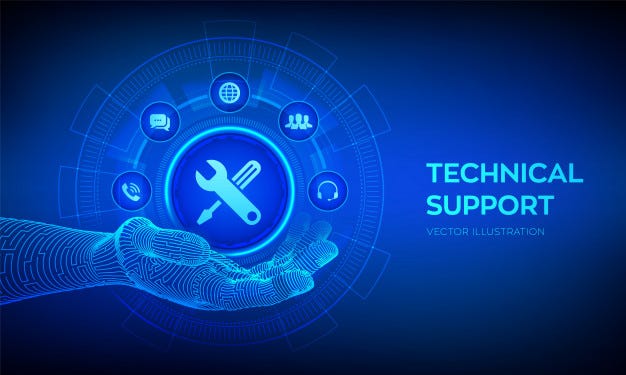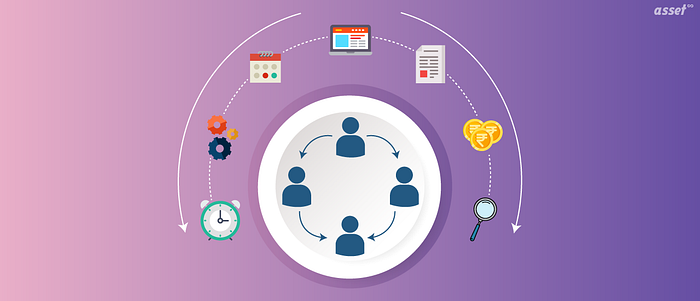SUPPORTING YOUR PRODUCT: HOW TO PROVIDE BETTER TECHNICAL SUPPORT
by Janet Bishung
Introduction
In the field of technology, no matter how good your product is, there is always a user somewhere having difficulty using it. This difficulty can be in the area of product installation, integrations, login errors or device peculiar issues.
This difficulty can lead to frustration, negative impact on user experience, loss in productivity and finally, loss in revenue as the user might decide to opt-out of using your product.

In order to stay in and grow your company, there is a need to prevent such difficulties.
For this reason, having a technical support service is essential.
The importance of tech support
It is perceived that technical support is the same as customer support, but this is not. While the latter deals with complaints, user frustrations and service delivery issues. The former comprises technological experts who answer technical questions.
The questions may be related to software integrations, installation errors, user login issues and any other technical problem that prevents users from using your product.
The two forms of customer management may complement each other, but their management and philosophy differ and each does not get involved in a user’s experience at the same time.
In essence, technical support focuses on providing reliable technical assistance to the end-users of companies that deliver technology-enabled products. This in turn enables practical product usage. It bridges the gap between an organization’s non-technical users and the technical world.

There are considerable ways of making your technical support services top-notch and excellent to enable better service delivery.
Different ways of providing better support
Having known what technical support is and why it is needed, it is essential to get it right as a new company -perhaps as one already running a technical support system. Here are five tips for better technical support services.
Let’s get started.
Easy access to the Technical Support
Where is your support link found on your website? Is it hard to find?
It would be best if you had a rethink. No user will want to spend time looking through your website in search of the helpline or email address. Create a unique form of support channel that can be easily accessible for your services.
Provide FAQs for self-service.
Every business website comes with a set of default pages for straightforward navigation. One of these is the Frequently Asked Questions (FAQs) page.
It offers users with self-service opportunities and it is a quick and easy to use alternative to contacting the helpdesk. It shows a list of common questions users may have about the product and the answers or quick fixes to these questions.

(This page may not only consist of text-based solutions but can also contain videos that show the step-by-step solutions).
With a self-service option in place, users can solve common queries, creating the opportunity for users with in-depth and complex questions to speak directly with the technical experts. For your FAQs to stand out, it should always be updated to keep up with the relevant issues.
Just a note, FAQs do not answer all possible questions. Sometimes, your users need to speak to your team, i.e. technology experts.
Offer several channels of technical support.
An email is a fantastic tool but relying on emails, and phone communication would not cut it for any business that wants to grow in this era.
There should be diverse channels available and open for communication between users and the technical support team. Companies can provide social media channels, live chats alongside the email and phone medium.

Amir Farhi, Vice President, Strategic Alliances & Business Development atWalkMe once said, “the ubiquity of instant communication channels has meant that people want to get the support they want, whenever they want and through whatever method is most convenient”. Providing this channel gives you an edge.
But, it’s not just about providing the channels. It is also about relating to the users from them as well. Let them feel your presence as a business; take the time to monitor and contribute to the conversations happening online about your product. Not only will it solve the customer’s immediate problem, but it’ll reassure others that you care, and convince them to become customers too.
Don’t keep customers waiting!
Have you ever felt anxious or confused about using particular software and sent emails to the support email address but got no response?
I have
No user wants to wait endlessly or feel neglected when having an issue that needs to be solved. Therefore, keep your users from becoming upset by making sure your technical support team is not overwhelmed or understaffed. Make sure issues are solved, and emails responded to within 24 hours or before the close of a business day.
Also, when a representative can’t provide a user with an immediate response or help with a question or problem, ensure they get back to or follow up with the user. Remember, bad publicity from a user is not what you need as a company and could go a long way in sabotaging the company’s reputation.
Using the ticketing system to keep track of Users
A known way of ensuring users complaints are not left unattended is using the ticketing system.

A ticketing system is when emails, direct messages from social media platforms, phone sessions, etc. go through systems that turn them to tickets. These systems are known to be effective in support management. Examples are tender, HelpSpot, Freshdesk, Zendesk, etc.
Ticketing systems make the process of providing support easier with multiple staff members. This is because you can know when a request has been resolved and who is working on it. They also make it easier for you to keep track of the support requests coming in and how much time resolutions are taking.
Conclusion
Technical support is a significant element in every company’s support infrastructure. It can be likened to be the backbone for the overall user experience for a product or service-based Company.
If done precisely, support can be a crucial selling point, a reason for the user to choose your product over the competition.
Note: you will never eliminate support requests. But you can do a lot to minimize them and to reduce the time spent dealing with them.
